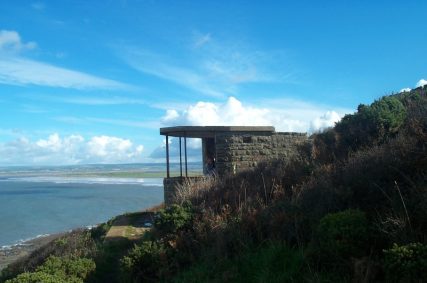Kipling Tors is a long narrow piece of hillside, originally the old cliff line, which rises up behind the western part of Westward Ho! It is covered in bracken, gorse and unimproved grassland, with the occasional pocket of scrubby woodland. The Tors are owned by the National Trust and provide a haven for wildlife, with spectacular views for walkers.
Landscape and nature
Kipling Tors is a long narrow piece of hillside, marking the line of a former sea-cliff. The slopes of the hillside in this area help reveal much of the area’s geological and climatic past – with the relict cliff face situated far above the sea-level seen today, and hillslopes comprised of rocky scree – fractured into pieces in the freezing temperature of previous ice ages.
At the coastline below the Tors you will also see other clues of past geological processes in the form of a raised beach sitting on top of the wave cut platform – created by seas several metres higher than the current sea level.
Today, the hillside is covered in bracken, gorse and unimproved grassland, with the occasional pocket of scrubby woodland.
History
Rising above the South West Coast Path, Kipling Tors was given to the National Trust by the Rudyard Kipling Memorial Fund in 1938 in order to preserve the character of the hill, which featured in Kipling’s novel Stalky and Co.
The site is crossed by numerous footpaths and located on the western boundary is an old coastguard hut. Newly restored by the National Trust, with the help of local school children, the hut offers fine views of Bideford Bay and the North Devon Coast AONB. The Coastguard lookout was constructed between 1909 and 1911 in response to the sinking of the ‘Thistlemoor’ steamer with the loss of 20 lives. This small building was also used as a lookout during World War II and was restored in 2009.


